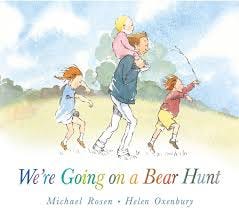This post is different from previous ones.
I had already resigned myself to the fact that for another month there would be no newsletter post; the latest was published at the end of July. August came and went with me drafting a three-strand braided personal essay that went off to a different direction, would not yield to the external deadlines I was trying to impose on it, and turned out to be not ready. I turned inwards to find the way out - or forward.
This autumn has come with low-key but all-pervasive feelings of grief. My default setting - rational inquiry - is activated but does not usually yield any meaningful results. Even this phrasing reflects this academic, rational mode, but at least, I can now observe myself doing it, ‘I’ being the deeper self and ‘myself’ the mind that spins the narrative webs.
As recently as four years ago, the space between the ‘I’ and the ‘myself’ was non-existent. My therapist told me, “You are too much in your head and not at all in your body.” I jotted down this remark, even though it meant nothing. What other way was there to make sense of things except through the rational mind?
As therapy went on, and I read The Body Keeps the Score, When the Body Says No, and Trauma and Memory, something began to emerge. I use ‘something’ and ‘emerge’ advisedly: it feels like a shapeless awareness that has lain buried deep, and gradually shows itself, Protean-like, on the surface of my awareness.
Grief catches me unawares: as I do the dishes, or sew on a button, tears stream down untriggered. The only experience I have of this spontaneous, sob-less weeping has been after my parents’ deaths eleven years ago. But now I know enough not to change course like a toy car bumping into a wall by distracting myself. Experience has shown me that the only way is through, not away: I take some deep breaths, move my body, sing, do some sewing work, read, journal.
“We can’t go over it, we can’t go under it…Oh no! We’ve got to go through it!”
Michael Rosen
A few days ago a friend mentioned the theory of Dr Lois Tonkin’s model of growing around grief. It is illustrated by a fried egg, where the yolk, representing the grief, remains constant, but one’s life grows around it like the egg white. (There is a lot of material on it online, but I liked this link because it also shows other useful ways of visualising this process.)
The images convey the message I’ve been receiving from my various readings over the recent years: acceptance of the is-ness of the present moment, whatever that may be; life growth can be its boon. Promising, liberating thoughts. I will - in time - ultimately accept that the grief is here to stay as a permanent life companion, and will fertilise rather than blight my life. But this phrasing is deceptive: it uses the future tense and couches the experience as something that will happen at an indeterminate point in the future.
Let me rephrase the sentence: acceptance of grief’s presence and its transmutation into growth happens every moment, at the ever-unfolding ever-present.
I carry on writing in order to hear myself.
(Photo credit Leti Kugler on Unsplash)






Grief is part of growing older. We lose those we love. You can run away from this or by contrast bury yourself negatively in it- either way it's your head trying to control what cannot be controlled. Acceptance is not a glib activity but a daily one of holding those who have gone alive in your heart and then going outside into the day and trying to be alive to yourself and to others.
Grief lived properly is a form of grace. I then need to ask myself how often I am open to this perspective!
thank you for sharing your words, sending you lots of love as you navigate your way through your grief. xx